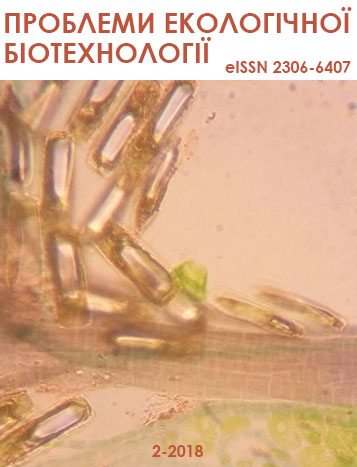Antioxidant properties of different blueberries species
DOI:
https://doi.org/10.18372/2306-6407.2.13223Keywords:
blueberries, antioxidant, flavanols, anthocyanin, polyphenols, economy, ORAC, DPPH, free radicalsAbstract
Nowadays antioxidant properties of blueberries are widely used in medicine for drugs production and as additives to cosmetic products. Those fruits contain in composition different phenolic compounds, which eventually ensure their antioxidant properties. The number of blueberry plantations is increasing on the territory of Ukraine; therefore, the study of the antioxidant properties of various types of blueberry is particularly relevant. For recommendations on the production of commercial blueberries species, it is essential to determine the content of biologically active substances and evaluate their antioxidant activity of potentially useful parts of the plant.
References
Use of a Free Radical Method to Evaluate Antioxidant Activity / [Brand-Williams W., Cuvelier M. E., Berset C.] // LWT - Food Science and Technology. – 1995. – № 28. – P. 25–30.
Oxygen radical absorbing capacity, anthocyanin and phenolic content of highbush blueberries (Vaccinium corymbosum L.) during ripening and storage / Kalt W., Lawand C., Ryan D.A.J. et al. // Journal of the American Society for Horticultural Science. – 2003. – № 128. – P. 917–923.
Mainland C.M. Blueberry health information – some new, mostly review/ C.M. Mainland, J.W. Tucker// Acta Horticulturae. – 2002. – № 574. – P. 39–43.
Phenolic profile and antioxidant activity of highbush blueberry (Vaccinium corymbosum) during fruit maturation, ripening and storage/ Castrejon A.D.R., Eichholz I., Rohn S. et al. // Food Chemistry. – 2008. – № 109. – P. 564–572.
Free radical scavenging activities measured by electron spin resonance spectroscopy and B16 cell antiproliferative behaviors of seven plants / Calliste C.A., Trouillas P., Allais D.P. et al. // Food Chemistry. – 2001. – № 49. – P. 3321–3332.
Oxygen radical absorbing capacity of anthocyanins / Wang H., Cao G. et al. // J. Agric. Food Chem. – 1997. – № 45. – P. 304–309.
Survey of antioxidant capacity and phenolic composition of blueberry, blackberry, and strawberry in Nanjing / Huang W.-Y., Zhang H.-C., Liu W.-X. et al. // Journal of Zhejiang University SCIENCE B. – 2012. – № 2. – P. 94–102.
Hancock J.F. Blueberries/ J.B. Retamales, J.F. Hancock. – London, UK: CABI, 2012. – 323 p.
Phenolic compounds and antioxidant activity of blueberry cultivars grown in Brazil / Rodrigues E., Poerner N., Rockenbach I. et al. // Ciência e Tecnologia de Alimentos. – 2011. – № 31. – P. 911–917.
BMG LABTECH Electronic resource. – 2014. – Access mode: – https://www.bmglabtech.com/fileadmin/06_Support/Download_Documents/Application_Notes/AN267.pdf. – ORAC
Development and validation of oxygen radical absorbance capacity assay for lipophilic antioxidants using randomly methylated β-cyclodextrin as the solubility enhancer / Huang D., Ou B., Hampsch-Woodill M. et al. // Journal of Agricultural Food Chemistry. – 2002. – № 50. – P. 1815–1821.
High-throughput Assay of Oxygen Radical Absorbance Capacity (ORAC) Using a Multichannel Liquid Handling System Coupled with a Microplate Fluorescence Reader in 96-Well Format / Huang D., Ou B., Hampsch-Woodill M. et al. // Journal of Agricultural Food Chemistry. – 2002. – № 50. – P. 4437–4444.
ProConsulting Electronic resource. – 2017. – Access mode: – https://pro-consulting.ua/ua/pressroom/est-potencial-biznes-plan-predpriyatiya-po-vyrashivaniyu-golubiki


